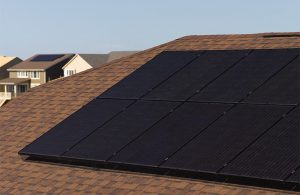Treasury proposes rules to qualify for IRA clean hydrogen tax credits

The Dept. of the Treasury proposed guidance on Friday for claiming the 45V Clean Hydrogen Production Tax Credit established within the Inflation Reduction Act. By producing hydrogen with clean, renewable energy sources like solar power, hydrogen can decarbonize industries using heavy machinery.
The 45V tax credit provides up to $3 per kilogram of hydrogen to projects with low lifecycle greenhouse gas emissions, and accompanies other hydrogen programs such as the Dept. of Energy’s Regional Clean Hydrogen Hubs Program, which is investing $7 billion to catalyze nearly $50 billion in hydrogen investments across 7 selected Hubs.
The proposed rules for claiming the 45V credit clarifies how green hydrogen producers should calculate a project’s greenhouse gas emissions. The DOE has adapted an established model for calculating these emissions in other industries, R&D GREET, for hydrogen projects, 45VH2-GREET.
“We’re thrilled to see this critical guidance that will help drive demand for domestic solar manufacturing,” said Mike Carr, executive director of Solar Energy Manufacturers for America (SEMA). “We especially appreciate the thoughtful approach the Biden-Harris Administration took to find a middle ground for industry stakeholders on additionality, deliverability and hourly-matching requirements, that we believe will align with our shared climate goals while letting this industry grow. As builders of the cheapest source of new electricity across the country, U.S. solar manufacturers, along with our partners in the energy storage industry, stand ready to help supply the affordable zero-carbon power needed to make hydrogen a true climate solution. Alignment with the three pillars approach embodies the intent of the Inflation Reduction Act to maximize U.S. clean energy production and support the clean energy transition.”
It also proposes rules regarding hydrogen production via electrolysis to ensure that the electricity used is below the maximum emissions intensity in the statute. The guidance proposes requirements for hydrogen producers to use energy attribute certificates (EACs) with certain characteristics to assess and document their qualification for a tier of the tax credit. Specifically, the guidance proposes that EACs must represent electricity generation that is:
- Time-matched to the period during which the electrolyzer is operating — beginning on an annual basis, and later transitioning to an hourly basis as tracking systems improve;
- Deliverable to the electrolyzer — by being located in the same grid region as described in the NPRM and in GREET documentation, and based on the Dept. of Energy’s 2023 National Transmission Needs Study; and
- Incremental to existing generation — such as from new clean power plants.
These three requirements are consistent with the lifecycle emissions accounting required by the law. Without these requirements, hydrogen production would likely increase grid emissions, a press release from the Biden-Harris administration states.
“While we’ve been eagerly awaiting the Administration’s proposal on 45V guidance for the clean hydrogen Production Tax Credit, we are concerned with the lack of flexibility in the proposed rule and the impact it may have in jump-starting a hydrogen industry at scale,” Ray Long, president and CEO of the American Council on Renewable Energy (ACORE). “As our analysis with E3 demonstrated, an annual match accounting approach could help unleash America’s nascent clean hydrogen industry and accelerate our energy transition. ACORE will continue to work with the Administration throughout this comment period, and we remain hopeful the final rule ultimately released has the needed flexibility to support the scale and role that hydrogen can play in achieving our decarbonization goals.”
News item from The White House





